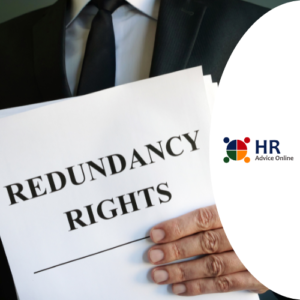In the context of an unfair dismissal application, and where an employer is submitting that the termination arose as the result of a ‘genuine redundancy’, it needs to be demonstrated that it is the employee’s ‘job’ that is no longer required to be performed.
Redundancy is not intended to be used to terminate an underperforming or ‘unwanted’ employee.
Rather the Fair Work Act 2009 provides that a person’s dismissal will be a case of genuine redundancy if their job is no longer required to be performed by anyone because of changes in the operational requirements of the employer’s enterprise.
Some possible examples as to when a dismissal will be a case of genuine redundancy due to a change in operational requirements (as provided for in the Explanatory Memorandum to the Fair Work Bill 2009), include:
· Where a machine is now available to do the job performed by the employee;
· Where the employer’s business is experiencing a downturn and therefore only requires three people to do a particular task or duty instead of five: or
· Where the employer is restructuring their business to improve efficiency and the tasks done by a particular employee are distributed between several other employees and therefore the person’s job no
longer exists.
When reviewing whether an employee’s job is no longer required to be performed, the test applied by the Fair Work Commission is not necessarily whether the duties or functions of a particular job themselves survive. Rather the test is whether the job itself that was previously performed by the applicant still exists within the business. As such, a termination can still be a ‘genuine redundancy’ in circumstances where the duties of a previous job persist but are redistributed amongst other existing positions.
In such circumstances, it is essential that the employer can demonstrate that the incumbent of a former position does not, after the reorganisation of the workplace, have any duties left to perform. If there is no longer any ‘job’, function or duty to be performed by that person, their position becomes redundant. It is important that an employer distinguish that it is the employee’s ‘job’ which has become redundant, rather than the actual employee themselves.
it is important to note that the Fair Work Act 2009 further provides that an employer must comply with any obligation in a modern award or enterprise agreement to consult with an employee about the redundancy, in order for the termination to be deemed a genuine redundancy.
Prior to any redundancy activity occurring, we recommend that you contact a member of our HR Advice team on 1300 720 004 to discuss the consultation process that is required to be undertaken and to ensure that due process is applied.
HR Advice Online can also provide our members with a range of templates to support the redundancy process, including a ‘Notification of Potential Redundancy Letter’ template and a ‘Redundancy Termination Letter’.
Information in HR Advice Online guides and blog posts is meant purely for educational discussion of human resources issues. It contains only general information about human resources matters and due to factors such as government legislation changes, may not be up to date at the time of reading. It is not legal advice and should not be treated as such.





